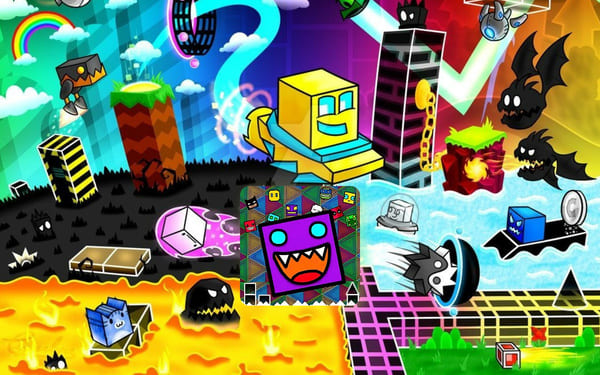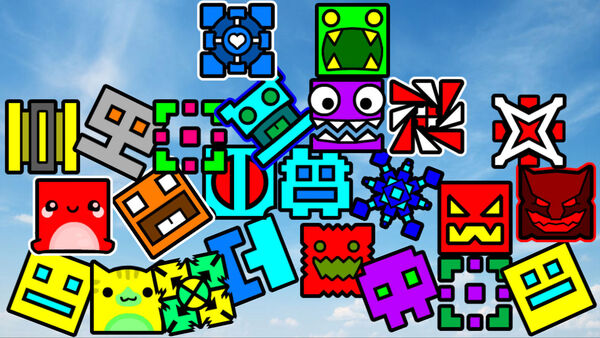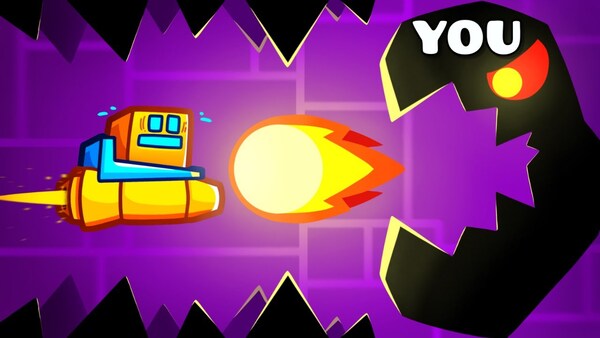
Introduction
Geometry Dash, a rhythm-based platformer known for its fast-paced gameplay and engaging music, presents players with a significant challenge: creating and navigating complex custom levels. While the game offers a robust level editor, many players struggle with designing levels that are both challenging and enjoyable. This article delves deeply into the intricacies of Geometry Dash’s level design, focusing on the specific issue of balancing difficulty and playability. We’ll explore the nuances of creating levels that challenge players without leading to frustration, and offer detailed strategies for achieving this balance.
Understanding Level Design in Geometry Dash
Creating a successful level in Geometry Dash involves more than just placing obstacles and decorations. It requires a deep understanding of game mechanics and player experience.
The Basics of Level Design
At its core, level design in Geometry Dash involves creating a path that the player’s character will navigate, avoiding obstacles and synchronizing with the music. Here’s a basic outline:
- Path Creation: Design the route the player will take, ensuring it aligns with the level’s difficulty.
- Obstacle Placement: Add obstacles such as spikes, blocks, and moving platforms.
- Timing: Ensure that obstacles and jumps are synchronized with the game’s rhythm.
The Role of Music

Music plays a crucial role in Geometry Dash level design:
- Rhythm Sync: Obstacles and jumps should be timed with the beat of the music to enhance the player’s experience.
- Music Choice: Select tracks that complement the level’s theme and difficulty. High-energy music can make complex levels feel more engaging.
Common Challenges in Level Design
Designing a level that is both challenging and enjoyable can be difficult. Here are some common challenges faced by level creators.
Balancing Difficulty
One of the biggest challenges in level design is striking the right balance between difficulty and enjoyment:
- Too Easy: A level that is too easy can quickly become boring and fail to engage players.
- Too Hard: Conversely, a level that is too difficult can lead to frustration and discourage players.
Ensuring Playability
Ensuring that a level is playable involves addressing several factors:
- Clear Pathways: Players should be able to navigate through the level without confusion.
- Predictable Patterns: Obstacles should follow predictable patterns to allow players to learn and adapt.
Strategies for Balancing Difficulty
Achieving the right balance between challenge and enjoyment requires careful planning and testing. Here are strategies to help you balance difficulty in your levels.
Gradual Difficulty Progression

Introduce difficulty gradually:
- Start Simple: Begin with easy sections to help players get accustomed to the level.
- Increase Challenge: Gradually introduce more complex obstacles and patterns as players progress.
Testing and Iteration
Testing is crucial for balancing difficulty:
- Playtesting: Regularly test your level to ensure it’s both challenging and fair.
- Feedback: Seek feedback from other players to identify areas that may need adjustment.
Utilizing Advanced Design Techniques
Advanced design techniques can help you create more engaging and balanced levels. Here are some techniques to consider.
Implementing Checkpoints
Checkpoints can make challenging levels more accessible:
- Strategic Placement: Place checkpoints at difficult sections to allow players to practice and improve.
- Avoid Overuse: Too many checkpoints can make a level feel too easy. Use them sparingly.
Using Dynamic Obstacles
Dynamic obstacles add variety and challenge:
- Moving Platforms: Incorporate moving platforms to create dynamic and engaging sections.
- Variable Speed: Adjust the speed of obstacles to increase complexity and keep players on their toes.
Addressing Common Design Mistakes
Avoiding common design mistakes can improve the quality of your levels. Here are some pitfalls to avoid.
Overcomplicating the Level
Complexity is important, but overcomplicating a level can lead to confusion:
- Keep it Manageable: Ensure that the level’s design is complex enough to be challenging but not so complex that it becomes frustrating.
- Clear Visuals: Use clear and distinct visuals to help players navigate the level.
Ignoring Player Feedback
Player feedback is crucial for improving level design:
- Listen to Players: Pay attention to feedback and adjust your level based on player experiences.
- Adjust Difficulty: Use feedback to fine-tune the difficulty and ensure it matches your intended challenge level.
Enhancing Level Aesthetics
Aesthetics play a significant role in creating an enjoyable experience. Here’s how to enhance the visual appeal of your levels.
Consistent Theme

Maintain a consistent theme throughout your level:
- Visual Style: Choose a visual style that complements the music and enhances the level’s overall atmosphere.
- Color Scheme: Use a coherent color scheme to create a visually appealing experience.
Using Decorations
Decorations can enhance the level’s aesthetics:
- Backgrounds: Add backgrounds that fit the theme and add depth to the level.
- Animations: Use animations to make the level more dynamic and engaging.
Creating Engaging Challenges
An engaging challenge is one that is difficult but rewarding. Here’s how to create challenges that keep players motivated.
Rewarding Progress
Make sure players feel rewarded for their progress:
- Positive Reinforcement: Use visual and auditory feedback to reward players for overcoming obstacles.
- Unlockables: Consider adding unlockable content or achievements to motivate players.
Designing Memorable Sections
Design memorable sections that stand out:
- Unique Obstacles: Create unique and innovative obstacles that provide a fresh experience.
- Signature Moves: Incorporate signature moves or sequences that players will remember and enjoy.
Staying Updated with Design Trends
Staying updated with the latest design trends can help you create levels that resonate with the Geometry Dash community.
Following Community Trends
Keep an eye on popular trends within the community:
- Popular Levels: Study popular levels to understand current design trends and preferences.
- Community Feedback: Engage with the community to stay informed about emerging trends and techniques.
Adapting to New Features
Take advantage of new features and tools:
- Updates: Utilize new tools and features introduced in game updates to enhance your level design.
- Experimentation: Experiment with new features to create innovative and engaging levels.
Learning from the Pros
Studying the work of professional level creators can provide valuable insights. Here’s how to learn from the pros.
Analyzing Top Levels
Analyze top levels created by professionals:
- Design Techniques: Observe the design techniques used in top levels and consider how you can incorporate similar strategies.
- Challenge and Balance: Study how professionals balance difficulty and enjoyment in their levels.
Watching Tutorials
Watch tutorials from experienced creators:
- Design Tips: Tutorials often provide tips and tricks for improving your level design.
- Advanced Techniques: Learn advanced techniques that can elevate the quality of your levels.
Conclusion
Mastering Geometry Dash’s level design requires a careful balance between challenge and playability, as well as a keen eye for aesthetics and player engagement. By understanding the basics, utilizing advanced techniques, and avoiding common mistakes, you can create levels that are both challenging and enjoyable. Incorporating feedback, staying updated with trends, and learning from experienced creators will further enhance your skills. With dedication and practice, you can design levels that not only test players’ abilities but also provide a rewarding and memorable experience.









